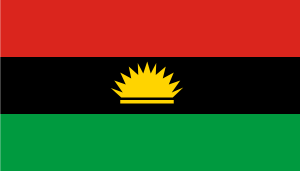 In 2006, there was a film in Malayalam which became a cult film of sorts. It was called Thanmathra (“Molecule”), and depicted a man’s frightening descent into Alzheimer’s. But what gave the story its poignancy was the bond between the protagonist and his son: the single-minded effort on the part of the former to make the latter an officer of the Indian Administrative Service. Incidentally, the movie also focussed on the relationship between the protagonist and his father.
In 2006, there was a film in Malayalam which became a cult film of sorts. It was called Thanmathra (“Molecule”), and depicted a man’s frightening descent into Alzheimer’s. But what gave the story its poignancy was the bond between the protagonist and his son: the single-minded effort on the part of the former to make the latter an officer of the Indian Administrative Service. Incidentally, the movie also focussed on the relationship between the protagonist and his father.
Speaking on the movie, the director said that he chose the name of the film to represent Indian society. Even if each family was nuclear (an atom, in fact), it was joined to a multitude of other families – each son was a father, each mother a daughter, each son a father in his turn… and so on and so forth. In India, the joint family never died, but formed a loosely structured molecule.
This metaphor stuck in my mind, and I was immediately reminded of it the moment I read the stories in this collection. Because Dan Chaon is writing about a molecule that is fast coming unstuck.
——————————————-
If I were asked to pick a theme running through all the stories in this collection, I would say ‘family’. Here are fathers, sons, mothers, daughters and siblings, all loving and hating, bonding and drifting apart. I am not familiar with American society, but from the laments I have heard from friends and relatives settled abroad about ‘deteriorating’ relationships, I conclude that the strong familial fidelity that is the norm in India is conspicuous by its absence. This in itself is not a bad thing: it gives a lot of freedom to individuals, and does prevent parental notions of control which can become claustrophobic. But it does remove the safety net below the tenuous thing we call ‘security’.
This is illustrated in the story Falling Backwards. This tale, told from back to front, traces the life of an alienated woman at her current lonely stage in life to her childhood moments of companionship with her father. It ends with the telling metaphor of her father and herself falling backwards willingly from a construction scaffolding, knowing that the net will catch them.
Chaon flirts with horror (he confesses himself a horror fan), but there is nothing supernatural in these stories. What we see are glimpses of the darkness just below the surface. In a way, it is more frightening than ghoulies and ghosties and long-legged beasties and things that go bump in the night: because it is the darkness of the mind that is made visible. In I Demand to Know Where You Are Taking Me, one of the darkest stories in the collection, a macaw becomes the mouthpiece of a convicted rapist for his sister-in-law, who has a love-hate relationship with him. In Here’s a Little Something to Remember Me By, a shameful childhood secret keeps on haunting a man, who is not allowed to grow up because his silence might have cost his friend his life. In both these stories, the conclusion is left tantalisingly uncertain.
The fluidity of time (as explored in Falling Backwards) as well as the fiendish face behind the smiling visage are hinted at in Big Me, which could be a frightening tale of a psychotic murderer or an innocent child’s fantasy, depending on how we look at it.
In the title story Among the Missing, there is a telling image of a family which apparently committed suicide en masse by driving into a lake. This story serves as a template, I feel, for all things Dan Chaon is trying to articulate.
Looking at their photograph, you couldn’t help imagining them all in that car, under the water. I saw it as a scene in a Bergman film—a kind of dreamy blur around the edges, the water a certain undersea color, like a reflection through green glass. Their bodies would be lifted a bit, floating a few centimeters above the upholstery, bobbing a little with the currents but held fast by the seat belts. Silver minnows would flit past the pale hands that still gripped the steering wheel, and hide in the seaweed of the little girl’s long, drifting hair; a plastic ball might be floating near the ceiling. Their eyes would be wide, and their mouths slightly open; their skin would be pale and shimmery as the inside of a clamshell; but there would be no real expression on their faces. They would just stare, perhaps with faint surprise.
This image stayed with me, long after I closed the book.
——————————————-
The short story is an entirely different proposition from the novel, even though both are forms of narrative. The novel is usually a relatively long and leisurely read, and the reader has a long affair with it: there is time for character development, philosophical discourses, interior monologue… whereas the short story wins purely on how effective it is in conveying its theme with the most economy of words. If the novel is a marriage, the short story is a whirlwind affair conducted over a weekend.
The best short stories are those that hit you with the force of a sledge hammer – which the stories in this collection do.
Well worth reading, if darkness does not bother you. If more sunny literature is your cup of tea, better leave it alone.








